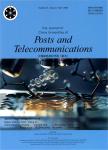Resource allocation based on genetic algorithm for multi-hop OFDM system with non-regenerative relaying
Resource allocation based on genetic algorithm for multi-hop OFDM system with non-regenerative relaying作者机构:School of Information and Telecommunication Engineering Beijing University of Posts and Telecommunications Beijing 100876 China
出 版 物:《The Journal of China Universities of Posts and Telecommunications》 (中国邮电高校学报(英文版))
年 卷 期:2009年第16卷第5期
页 面:25-32页
核心收录:
学科分类:0810[工学-信息与通信工程] 1205[管理学-图书情报与档案管理] 0839[工学-网络空间安全] 08[工学] 081001[工学-通信与信息系统] 0811[工学-控制科学与工程] 0812[工学-计算机科学与技术(可授工学、理学学位)]
基 金:supported by the National Basic Research Program of China (2007CB310604, 2009CB320401) the National Natural Science Foundation of China (60772108, 60702048)
主 题:multi-hop OFDM system non-regenerative relaying genetic algorithm power allocation subcarrier selection resource allocation
摘 要:This article investigates resource allocation in multi-hop orthogonal frequency division multiplexing (OFDM) system with amplifying-and-forwarding relaying to maximize the end-to-end capacity, Most existing methods for multi-hop system focus on power allocation or subcarrier selection separately, but joint resource allocation is rarely considered due to the absence of effective interaction schemes. In this work, a novel joint resource allocation methodology is proposed based on Partheno genetic algorithm (PGA), which produces excellent subcarrier allocation set (referred to as individual in PGA) with higher capacity by evolution operator generation by generation. In addition, an adaptive power allocation is also designed to evaluate the fitness of PGA and further enhance the system capacity. Both theoretical analysis and simulated results show the effectiveness of the proposed joint strategy. It outperforms the traditional method by as much as 40% capacity improvement for 3-hop relaying system when system power is high, and obtains much more capacity enhancement percent under conditions of low system power.



